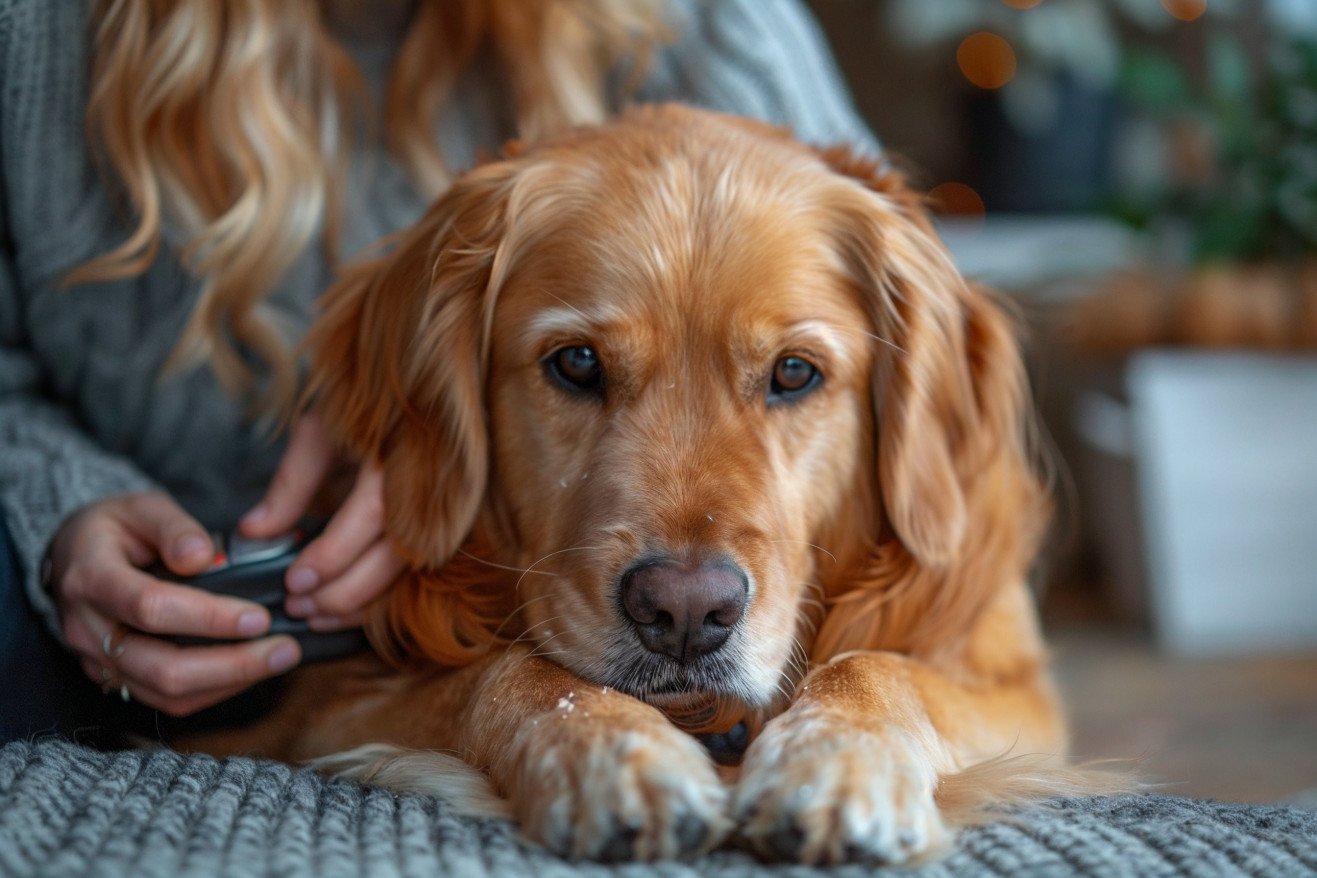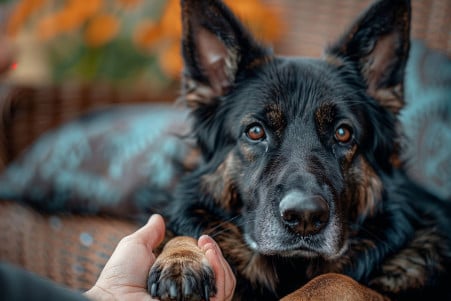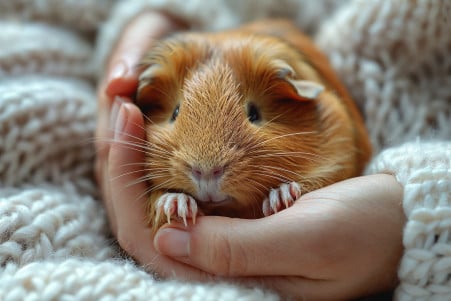How to Safely Grind Your Dog's Nails at Home: A Step-by-Step Guide
25 May 2024 • Updated 25 May 2024

While it’s important to keep your dog’s nails at a healthy length, grinding them down can be a difficult and sometimes dangerous task to do at home. However, if you use a pet nail grinder to grind your dog’s nails regularly, you can ensure that their nails never get too long. Just make sure that you only grind the very tips of the nails, take your time, and use lots of treats to keep your dog comfortable and still.
To help you with this important part of dog care, we’ve gathered information and advice from veterinarians, dog groomers, and dog owners. This article will walk you through the best practices, tools, and safety measures for grinding your dog’s nails. Armed with this information, you can confidently maintain your dog’s paws, all while minimizing pain and the chance of accidents.
How can you safely grind your dog's nails at home?
How to Know When to Trim Your Dog's Nails
Knowing when to trim your dog's nails is important for their overall comfort and well-being. As ScenthoundDog explains, the general rule of thumb is to trim before the nails touch the ground, which is about an eighth of an inch when the dog is standing. Signs that your dog's nails are too long include scratching, nails that curl under, nails that click when they walk, a change in their walk, and having trouble getting traction on slippery surfaces.
Dogster adds that you should be able to see your dog's nails when they are standing, but the nails should not extend past the paw pads. Long nails can lead to painful problems like penetration of the paw pad, changes in posture, inflammation, and an increased risk of tears and splits. Puppies and very active dogs may need their nails trimmed more often than older, less active dogs.
It can be more difficult to tell when dogs with black nails or furry paws need their nails trimmed. According to PortagePark, you can look for the white ring on the tip of the nail to see where the quick is on black nails. If your dog's nails are too long, GreatPetCare suggests that you can gradually trim the nail and quick back over multiple sessions until you can get to a point where you can trim their nails on a regular basis. Knowing when to trim your dog's nails will help you keep them comfortable and avoid potential problems.
How to Choose the Best Dog Nail Grinder
Nail grinders are the best tool for trimming dog nails, as they are easier to control and reduce the risk of cutting the quick. According to RexiPets, grinders are a safer option than traditional clippers, especially for dogs with dark or thick nails.
When choosing a nail grinder, make sure it has variable speed options, an ergonomic design, and replaceable grinding bands or drums. PrettyFluffy explains that corded grinders are more powerful, while cordless grinders are more portable and convenient. Make sure the grinder is the right size for your dog's breed and the thickness of their nails.
Other useful items include styptic powder to stop bleeding, towels to help hold the paw, treats for positive reinforcement, and a non-slip surface to help you keep control while grinding. With the right tools and the right technique, you can grind your dog's nails at home safely and effectively.
How to Grind Your Dog's Nails
Gradually getting your dog used to the nail grinder and the noise it makes is important to make sure they are comfortable. According to RexiPets, hold your dog's paw securely but gently, and grind the nails in 3-5 second intervals to prevent the grinder from getting too hot. The AKC says to make sure to angle the grinder slightly toward the dog to avoid hitting the quick, which is the sensitive part of the nail.
Keep grinding the nails until they are just above the ground when the dog is standing, but be careful not to hit the quick. PrettyFluffy suggests giving your dog treats and praise as you go to help them have a positive experience. With the right methods and a little patience, you can help your dog get used to nail grinding and make it a positive experience for both of you.
Desensitization Strategies: Helping Your Dog Stay Calm During Nail Grinding
Many dogs are afraid of getting their nails trimmed, and this is often due to past experiences. MyPreferredPetSitter explains that the best way to overcome this fear is to desensitize your dog slowly by starting with basic paw handling and rewarding them for staying calm. Healthy Paws Pet Insurance stresses the importance of taking your time and spending weeks or even months working up to your dog being OK with having their feet handled and nails trimmed.
When it comes to the grinder, you should introduce it to your dog slowly and let them sniff and check it out while giving them treats. Whole Dog Journal suggests a counter-conditioning protocol that will help you work up to longer periods of touching and exposure to the nail clippers or grinder. You can also use calming tools like exercise, anxiety wraps, or pheromone diffusers if you need to, according to Preventive Vet.
Remember to be patient and let your dog set the pace, and don't hesitate to get professional help if your dog's fear is extreme. However, with time, positive reinforcement, and a lot of patience, you can help your dog get over their fear and make nail trimming a much more enjoyable experience for them.
How to Prevent and Treat Nail Quick Injuries
The quick is the sensitive inner part of the nail containing blood vessels and nerves. Wahl USA notes that cutting the quick can lead to pain, bleeding, and even infection if it's not treated correctly.
To prevent hitting the quick, wikiHow Pet suggests grinding the nails down slowly, holding the grinder at a slight angle so that it's pointing toward the dog's body, and stopping when you see the pre-quick. If you accidentally cut the quick, Dr. Buzby's ToeGrips for Dogs recommends staying calm, applying pressure with a clean cloth, and using styptic powder or a mixture of cornstarch and baking soda to stop the bleeding.
Veterinary Healthcare Associates warns that an exposed nail quick can become infected, so you should take your dog to the vet if the bleeding can't be stopped or if you notice any signs of infection. It's important to treat quick injuries correctly to ensure that your dog doesn't experience any unnecessary pain or health issues.
Staying on Top of Nail Maintenance
Most dogs will need their nails trimmed every 2-4 weeks, depending on their lifestyle and how quickly their nails grow, says Preventive Vet. It’s important to make sure that you are keeping up with a regular schedule to avoid nails getting too long. If your dog’s nails are extremely long, Tier1Vet says that you should trim them back over several sessions to give the quick, which is the sensitive part of the nail, a chance to recede.
You can also use nail grinders or rough surfaces between trims to help naturally shorten your dog’s nails, according to PetMD. Not only will keeping up with this maintenance help your dog stay comfortable, but it will also help prevent injuries and joint problems, says Dogster. Making sure that you are taking care of your dog’s nails is an important part of being a responsible pet owner and practicing preventive care.
Conclusion: Why It's Important to Keep Your Dog's Nails Trimmed
Keeping your dog's nails at the proper length is an important part of being a good dog owner and practicing preventive care. It will help ensure that your dog doesn't experience pain, injury, or health problems.
Nail grinding is the best way to keep your dog's nails at the proper length, especially if your dog has dark or thick nails. With the right tools, approach, and patience, you can make at-home nail grinding a stress-free experience for you and your dog. By prioritizing your dog's nail care, you can help improve their comfort and mobility while strengthening your bond with them.


